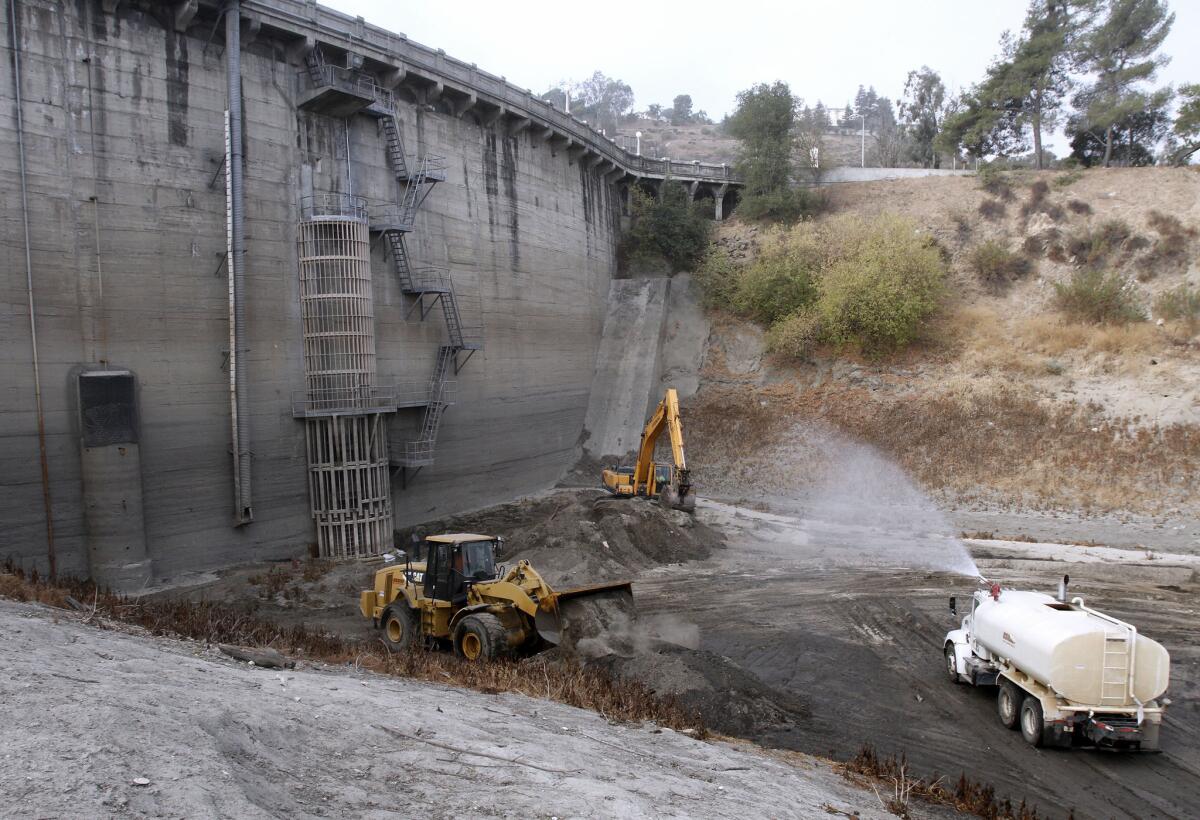Controversy lingers on Devil’s Gate

- Share via
After a brief informational tour that ended with a meeting last week in La Cañada, an EIR was approved for the Devil’s Gate Dam sediment-removal project.
The EIR was approved and certified late Wednesday afternoon in a 4-1 vote, with Supervisor Zev Yaroslavsky casting the lone vote against the motion made by fellow board member Mike Antonovich.
In his motion, Antonovich said the County considered stakeholder input and “displayed flexibility and innovation” in its efforts to reduce the scope and impact of the project.
Last week’s public meeting at Descanso Gardens drew nearly 50 area residents with the promise that questions would be answered and comments heard in advance of a Wednesday vote from the Los Angeles County Board of Supervisors, which would certify the final environmental review for the five-year project.
At the meeting, senior civil engineer and project manager Ken Zimmer explained the Devil’s Gate plan as a matter of public safety.
“Because of our responsibilities for flood control and safety, we have to be ready at all of our dams and debris basins to handle major debris events when they occur,” Zimmer said, hinting at the danger that would occur if a debris flow like the one that followed the 2009 Station fire were to happen again.
While some audience members came with questions about details of the project — about truck routes, fail safes against dust inhalation and traffic impacts — many expressed frustration that prior health and environmental concerns were neglected in an apparent attempt to push plans forward.
Altadena resident Dorothy Wong shared her worries about what up to 425 daily truck hauls and the removal of 800,000 cubic yards of sediment annually would do to the Hahamongna Watershed Park’s diverse ecosystem.
“This [plan] is very insensitive to the wildlife that live there, and very insensitive to all of us who recreate here, for something that seems fearfully driven,” Wong said.
Some wanted to know why the county had not adopted more recommendations offered by a Pasadena-based working group of engineers, scientists and public policy experts who investigated less-invasive alternatives to DWP’s earlier proposals.
La Cañada resident Marnie Gaede said that group deemed the removal rate of 220,000 cubic yards annually over a longer time period would have less impact.
“You’re asking us to be afraid of not moving fast enough, and we’re telling you we’re not afraid of moving slower,” she told Zimmer. “What good is a public comment (period) if you’re not going to respond in a rational way?”
But Zimmer said DPW adopted most of the recommendations made by the working group, like insistence that only trucks made on or after 2007 be employed, which cut nitrous oxide output in half and particulate matter by 90%, and reduction of the project area.
“I appreciate that people here say, ‘I’d like to go slower,’ but you people aren’t taking that risk,” he responded. “The county actually holds that risk, so we would be responsible if anything happened.”
Afterward, Zimmer said extending the life span of the project would increase the project’s roughly $65-million price tag considerably.
